Responsible travel - a green stay in Patagonia
Book your individual trip , stress-free with local travel experts
- roughguides.com
- a-green-stay-in-patagonia
Plan your tailor-made trip with a local expert
Book securely with money-back guarantee
Travel stress-free with local assistance and 24/7 support
written by Rough Guides Editors
updated 21.11.2018
Enjoy a more eco-friendly stay in Patagonia with our green guide to the region, taken from travel bible Great Escapes.

Stay in an eco camp
Ride through the wilderness, explore the lake district, paddles and pedals.
Ecocamp is a remote, futuristic camp in Chile’s Parque Nacional Torres del Paine. Tucked up in an igloo-like geodesic dome (made from sturdy galvanized iron and raised above the ground on a wooden base), guests can enjoy all the creature comforts of a hotel yet still have the wind-whistling-against-the-canvas experience of camping. Inside, the domes are high enough for you to stand upright; there are double or twin beds with fleece sheets and blankets, and the “suite” versions have a private bathroom. Heating comes from a wood stove and each dome has its own hydro-turbine and solar panels to provide electricity.
Ecocamp’s owner, Cascada Expediciones, organizes a circular seven-day trek in the Torres del Paine that begins and ends at the camp, taking in Lago Nordenskjold, Valle Francés, the glacial Lago de Grey, the eastern lakes and the gigantic granite monoliths of the Torres del Paine. From the top of this awesome range you’ll feel like you’re at the ends of the earth, though of course you’re not: the Falkland Islands are only 800km away.
Prices, bookings, and details of walking itineraries are at www.cascada.travel. Wilderness Journeys ( www.wildernessjourneys.com ) also organizes a sixteen-day trekking holiday visiting the Torres del Paine, Fitzroy range and Parque Nacional Los Glaciares.

© Amalia S/Shutterstock
Ride across northern Patagonia on a nine-day wilderness horse-riding adventure, galloping across water meadows and rolling hills, passing through narrow rocky gorges and climbing up to high vantage points where condors soar overhead. The trip begins and ends at Estancia Heuchahue, a working cattle farm by the Río Aluminé in the Patagonian Steppes. The estancia is a centre for horse-riding – there are some eighty horses here – and is almost entirely self-sufficient: water for irrigation is gravity-fed from natural springs, all the electricity is provided by a hydro-turbine and fuel for hot water and heating comes from firewood on the farm.
The trip starts at Chapelco Airport in San Martín de los Andes, by Lago Lacar in western Argentina. For prices and itineraries see www.equineadventures.co.uk.

Autumn Colors in Lake Gutierrez, near Bariloche, Patagonia, Argentina © Ksenia Ragozina/Shutterstock
Just 35min south of Bariloche, the Lake District is one of the most accessible parts of northern Patagonia. Peuma Hue is a ranch at the southern tip of Lago Gutiérrez within the grounds of Nahuel Huapi, Argentina’s biggest national park, where you stay in restored log cabins overlooking a forested creek and the valley of D’Agostini. The area is popular with anglers, and there are guided treks and horse-riding in the surrounding poplar-filled hills. The short walks around the estancia connect with the national park trails, which you can follow on multi-day treks using the park’s mountain huts, plus there’s white-water rafting and kayaking at the nearby Río Manso.
For prices, directions, booking and details of accommodation and activities see www.peuma-hue.com .
Related articles from the blog

Fitzroy Adventure Camp, 17km north of El Chaltén, is a great base from which to explore the Mount Fitzroy range – its eight cabins on the shore of Río de Las Vueltas have views of Mount Fitzroy’s north face. The emphasis of the camp is on low-impact activities, so you can hire mountain bikes, canoes and kayaks for the day, or join a two-day canoe-and-camping descent of Río La Leona between Lago Viedma and Lago Argentino.
For trekking routes and expedition details see www.fitzroyexpediciones.com.ar .

The Rough Guide to Amsterdam
- National Parks & Reserves
- Off the Beaten Track
- Where to stay
Planning your own trip? Prepare for your trip
Use Rough Guides' trusted partners for great rates
Find even more inspiration here
Ready to travel and discover chile, get support from our local experts for stress-free planning & worry-free travels.

Planning a Trip to Patagonia: A Complete Guide (2024/25)

Travel Resources
- Accommodation at the best prices.
- Book activities and excursions in Spanish.
- Find cheap flights.
- Rent your Car for Patagonia
- -5% eSIM discount with unlimited data and no roaming charges
- Store your luggage for US$ 5.90 per day
- Travel and cancellation insurance with -5% discount
- I will organize your trip
Imagine standing amidst towering glaciers, observing unique wildlife, and trekking through some of the most breathtaking landscapes on Earth. Welcome to Patagonia, a vast and diverse region stretching across southern Argentina and Chile . This incredible destination, located at the southern tip of South America, offers an unforgettable adventure for nature lovers and outdoor enthusiasts alike. In this comprehensive guide, we’ll share insider tips and first-hand experiences to help you with planning a trip to Patagonia, ensuring the perfect Patagonian journey.
Key Takeaways
- Planning a trip to Patagonia? Get the best out of your experience with tips on when to visit, transportation options and accommodation choices.
- Explore iconic sights like W Trek, Perito Moreno Glacier & Laguna de los Tres by creating an itinerary tailored for one week, two weeks or three weeks.
- Strategically planning and optimizing your itinerary can lead to significant savings!
Best Time to Visit Patagonia
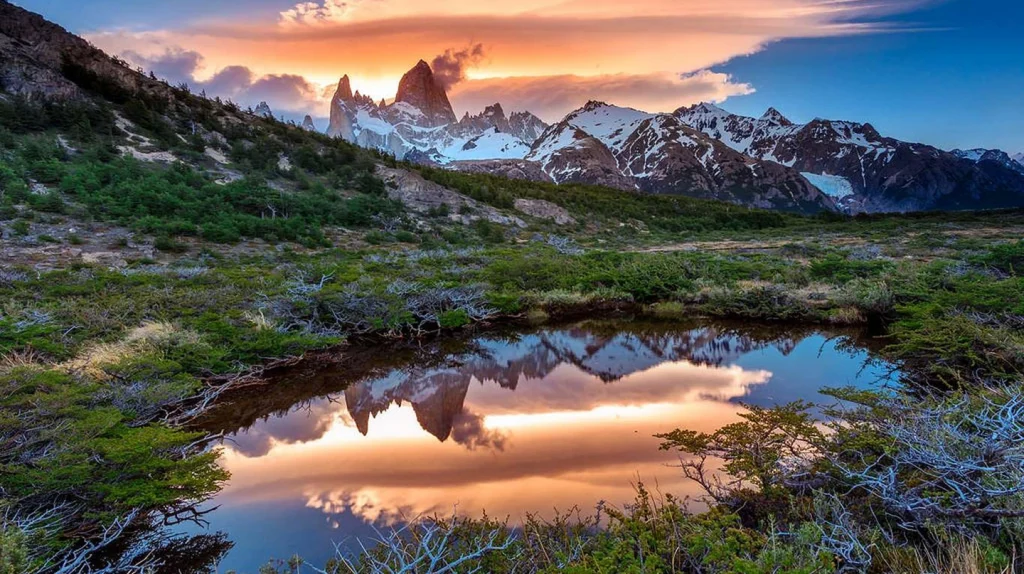
Choosing the right time to visit Patagonia can significantly impact your trip experience. The region’s weather and tourist influx vary throughout the year, influencing the availability of outdoor activities and accommodations. So, when should you embark on your Patagonian adventure?
We will discuss the pros and cons of visiting during different seasons.
High Season: December to February
The high season in Patagonia runs from December to February, coinciding with the Patagonian summer. Warm temperatures reach up to 22°C (72°F), perfect for outdoor activities like hiking in Torres del Paine National Park or exploring the breathtaking Chilean fjords. Wildlife enthusiasts will also enjoy spotting penguins and guanacos during these months.
However, the high season comes with its drawbacks. Popular destinations like Torres del Paine and Tierra del Fuego can get crowded, with limited availability of accommodations and packed hiking trails. Moreover, Patagonia’s unpredictable weather means you might experience sudden changes, even during the summer season. You could encounter:
- Sunny skies
- Cool breezes
All in one day.
Despite the challenges, visiting Patagonia during the high season ensures you’ll be able to participate in numerous outdoor activities while enjoying the region’s stunning landscapes. Just be prepared for rapidly changing weather and high tourist traffic.
Shoulder Season: September to November and March to April
If you prefer a more tranquil experience, consider visiting Patagonia during the shoulder season, which spans from September to November and March to April . During these months, you’ll encounter fewer crowds and still enjoy pleasant temperatures that range from the high 50s to the low 60s Fahrenheit (14-18°C).
The shoulder season also offers a unique opportunity to witness the region’s stunning landscapes as they transition between seasons. In spring (September-November), wildflowers bloom and fill the valleys with vibrant colors. Fall (March-April) brings a palette of warm hues as the foliage changes, painting the landscape in shades of red, orange, and yellow.
Keep in mind that the shoulder season may bring more rain than the summer months, with June being the wettest month. Nevertheless, the shoulder season’s milder temperatures, fewer crowds, and beautiful scenery make it an appealing time to visit Patagonia.
Low Season: June to August
While it may be tempting to visit Patagonia during the low season ( June to August ) to avoid the crowds, we would advise against it. The winter months bring heavy snowfall, resulting in closed hiking trails and reduced transportation schedules. Accommodations may also be limited during this period.
Temperatures during the low season range between the 30s to 60s Fahrenheit (3-18 degrees Celsius), adding to the challenges of exploring the region. For these reasons, it’s best to plan your Patagonian adventure during the high or shoulder seasons to fully enjoy the region’s activities and attractions.
Getting to Patagonia: Transportation Options
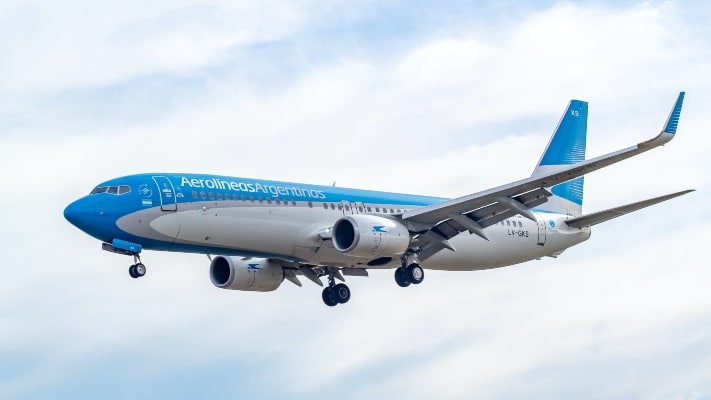
When planning your trip to Patagonia, you’ll need to consider transportation options to navigate the region’s vast distances. The most popular choices include flying, bus travel, and ferry travel. Each option offers distinct advantages and drawbacks, so let’s examine them to help you make the best decision for your Patagonian journey.
Flying is the fastest way to get around Patagonia, but it can be expensive. Bus
Flying to Patagonia
Flying is the most convenient and time-saving option for reaching Patagonia, especially if you have limited time to explore the region. Major cities like Santiago, Chile, and Buenos Aires, Argentina, offer flights to popular destinations such as:
- Puerto Madryn
- El Calafate
- Punta Arenas (for southern Chilean Patagonia)
- Ushuaia (for southern Argentine Patagonia)
Airlines such as Jetsmart, Sky Airline, and LATAM operate flights to various Patagonian airports in Chile. And Aerolineas Argentinas covers most of the flights within Argentina along with the low cost companies Flybondy and Jetsmart.
Booking flights in advance is recommended due to potential price and availability fluctuations throughout the year. To compare flight prices, consider using websites like Skyscanner.com .
While flying is the fastest option, it may not be the most cost-effective. Additionally, some remote destinations in Patagonia may not have air connections, necessitating alternative transportation methods to reach them.
Bus Travel in Patagonia
Bus travel is an affordable alternative to flying, though it can be time-consuming due to the region’s vast distances. Despite the long travel times, buses in Patagonia are generally comfortable and punctual, ensuring a pleasant journey.
Purchasing bus tickets can be done directly at bus stations or online via websites like BusBud.com. Be prepared for border crossing between Argentina and Chile, as they may require additional time and documentation checks.
While bus travel allows you to save on transportation costs, it may not be the most efficient method if you have limited time in Patagonia. Travel fatigue may also be a concern, as some bus journeys can span multiple days.
Ferry Travel in Patagonia
Ferry travel in Patagonia is a less common option, with limited connections available. However, it offers a unique and leisurely way to explore the region’s stunning landscapes, especially the Chilean fjords.
Though ferry travel may be slower and less frequent than other transportation options, it provides a memorable experience for those seeking a more intimate connection with Patagonia’s natural beauty. It’s an excellent choice if you have ample time to explore the region and prefer a slower-paced journey.
Accommodation Choices in Patagonia
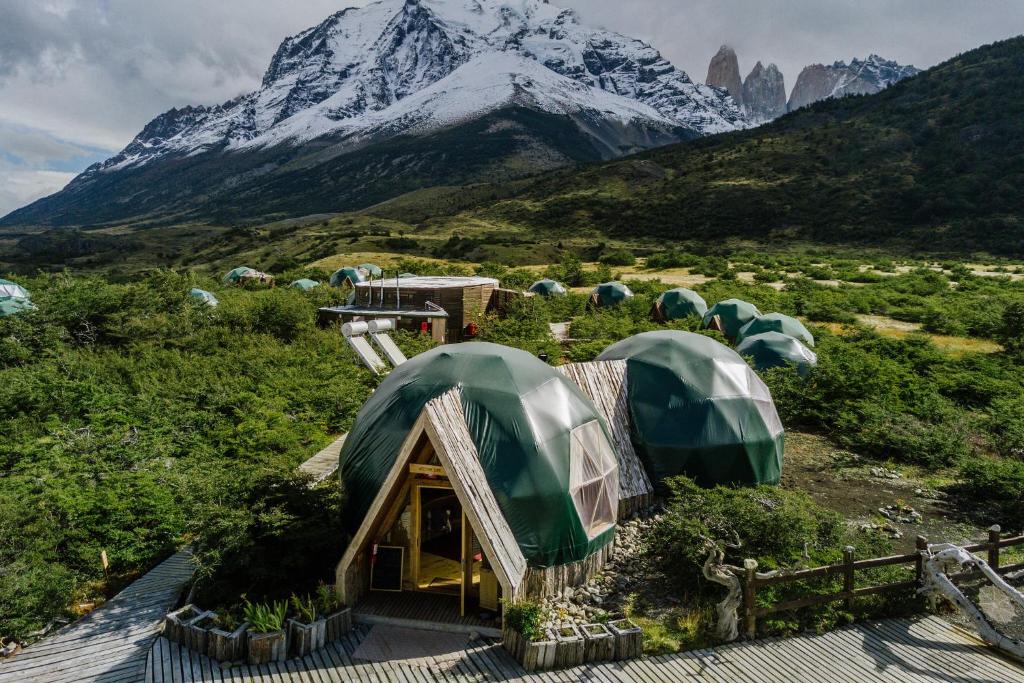
Your Patagonian adventure will require comfortable and convenient accommodations to rest and recharge after a day of exploration. Fortunately, the region offers a variety of options to suit different budgets and preferences, from budget-friendly hostels and guesthouses to mid-range hotels and luxury resorts.
We will examine the range of lodging options available in Patagonia.
Budget Accommodations
For travelers on a tight budget, hostels and guesthouses offer affordable lodging options without breaking the bank. These accommodations typically provide dorm-style rooms or private rooms with shared facilities. You can find hostels in popular destinations like El Calafate , El Chalten , and Puerto Madryn.
To search for budget accommodations, use websites like Booking.com and Hostelworld.com. Keep in mind that prices may vary depending on the season, so it’s essential to book in advance to secure the best deals.
Mid-Range Accommodations
Mid-range accommodations offer a balance between affordability and comfort, providing amenities like free Wi-Fi, daily breakfast, and in-room conveniences. These hotels often feature on-site restaurants, shared lounges, and communal terraces, allowing you to unwind and socialize with fellow travelers.
Some popular mid-range options in Patagonia include Tierra de Leyendas in Ushuaia and Peninsula Petit Hotel in San Carlos de Bariloche. Prices for mid-range accommodations generally range from $60 to $150 per night, depending on the location and amenities offered.
Reviewing cancellation policies is a must when booking mid-range accommodations since these can vary among properties. Plan carefully and book in advance to ensure you find the perfect fit for your Patagonian adventure.
Luxury Accommodations
For travelers seeking a more indulgent experience, luxury resorts and lodges in Patagonia offer top-notch services and facilities. These high-end accommodations often feature private excursions, luxury spa facilities, and secluded locations, ensuring an unforgettable stay.
EcoCamp Patagonia, for example, is an extraordinary eco-dome property that provides a unique lodging experience amidst the stunning landscapes of Torres del Paine National Park. Other luxury options, such as Tierra Patagonia and Awasi, are known for their incredible views, exclusive services, and personalized experiences.
For those seeking a unique and luxurious outdoor experience, consider glamping in Patagonia. Glamping, or glamorous camping, combines the thrill of camping with the comforts of a hotel. Imagine waking up in a comfortable bed, stepping outside your tent, and being greeted by the breathtaking landscapes of Patagonia. This experience is offered by several providers in the region, allowing you to immerse yourself in nature without sacrificing comfort. For more information on this ultimate outdoor adventure, check out this Patagonia glamping guide .
Luxury accommodations may come with a higher price tag, but the exceptional service, breathtaking surroundings, and exclusive experiences make them well worth the investment for a truly unforgettable Patagonian journey.
Essential Activities and Attractions
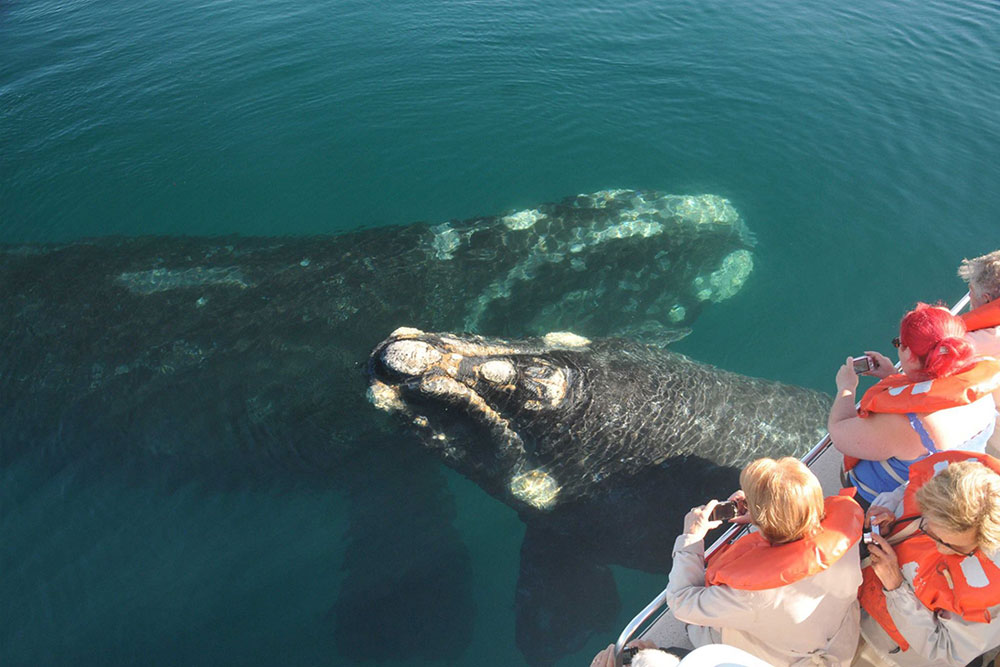
A trip to Patagonia offers a wealth of opportunities to explore diverse landscapes, encounter unique wildlife, and immerse yourself in the region’s rich culture. To make the most of your Patagonian adventure, consider incorporating essential activities and attractions into your itinerary, such as:
- Hiking in the stunning national parks
- Wildlife encounters, including penguin colonies and whale watching
- Glacier exploration, with visits to Perito Moreno and other impressive glaciers
By including these activities, you’ll have an unforgettable experience in Patagonia.
We will delve into these unforgettable activities.
Hiking and Trekking
Hiking is an essential activity for any Patagonian adventure, allowing you to discover the region’s stunning national parks and landscapes up close. Whether you’re a seasoned trekker or a casual hiker, Patagonia offers trails to suit all abilities and interests.
Torres del Paine National Park in Chilean Patagonia is a popular destination for hikers , boasting iconic trails like the W trek and the O Circuit. In Argentine Patagonia, Los Glaciares National Park offers equally stunning hikes, such as the Laguna de los Tres trail and the Laguna Cerro Torre trek.
Regardless of your chosen trail, always ensure you’re prepared with appropriate hiking gear, sufficient supplies, and a respect for the environment. Hiking in Patagonia is an unforgettable experience that will leave you in awe of the region’s natural beauty.
Wildlife Encounters
Patagonia’s diverse ecosystems are home to a wide array of unique wildlife, making it a fantastic destination for nature enthusiasts. Some of the wildlife you can encounter in the region includes:
These are just a few examples of the incredible wildlife you can see in Patagonia, offering you the opportunity for once-in-a-lifetime encounters.
Punta Tombo peninsula is the top spot for penguin-spotting, with the best viewing months between September and April. Whale watching is another popular activity, particularly in Peninsula Valdes from June to December, during the whales’ mating season.
Remember to always maintain a respectful distance and follow local guidelines when observing wildlife. Your responsible behavior will help protect these incredible creatures and ensure future generations can enjoy the same thrilling encounters.
Glacier Exploration
A visit to Patagonia is incomplete without exploring its awe-inspiring glaciers. Perito Moreno Glacier in Argentine Patagonia and Grey Glacier in Chilean Patagonia are two of the most impressive and accessible glaciers in the region.
Various tour operators offer day trips to these glaciers, with options for guided hikes, boat tours, and even ice trekking. No matter which option you choose, witnessing the sheer size and beauty of these ancient ice formations is a once-in-a-lifetime experience not to be missed on your Patagonian journey.
Planning Your Patagonia Itinerary
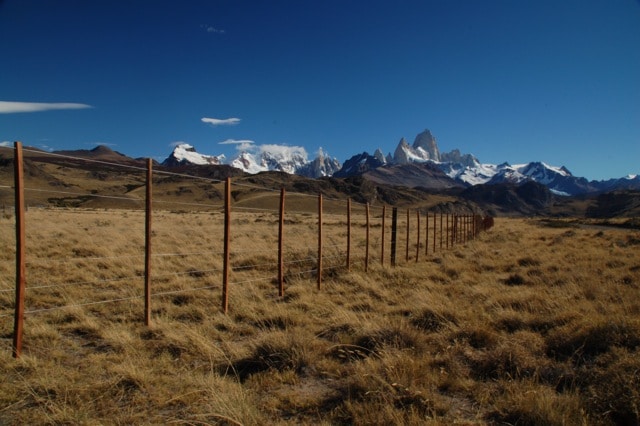
With so much to see and do in Patagonia, planning your itinerary can be both exciting and challenging. To help you make the most of your time in this vast and diverse region, we’ve created suggested itineraries for one-week, two-week, and three-week trips.
These itineraries can serve as a starting point for your own custom Patagonian adventure, tailored to your interests and available time.
One Week Itinerary
With just one week in Patagonia, you’ll want to focus on the region’s key highlights. Flying from Santiago or Buenos Aires to popular destinations like Torres del Paine National Park or Los Glaciares National Park will maximize your time for exploration.
In Torres del Paine, you can undertake the famous W trek, a 3-5 day hike that covers some of the park’s most iconic sights. In Los Glaciares National Park, a visit to the stunning Perito Moreno Glacier and a hike to Laguna de los Tres near El Chaltén are must-do experiences.
By focusing on these key attractions, you’ll make the most of your limited time in Patagonia.
Two Week Itinerary
With two weeks in Patagonia, you can delve deeper into the region’s diverse landscapes and attractions. In addition to the highlights mentioned in the one-week itinerary, consider exploring the Chilean fjords and the Carretera Austral , a scenic route that stretches over 1,200 kilometers through southern Chile.
The Carretera Austral offers access to remote national parks, glacier-fed lakes, and dramatic mountain landscapes. Highlights along the route include Pumalin Park, Queulat National Park, Cerro Castillo, and the Marble Caves. A two-week itinerary allows you to immerse yourself in Patagonia’s natural beauty and experience a more extensive range of attractions.
Three Week Itinerary
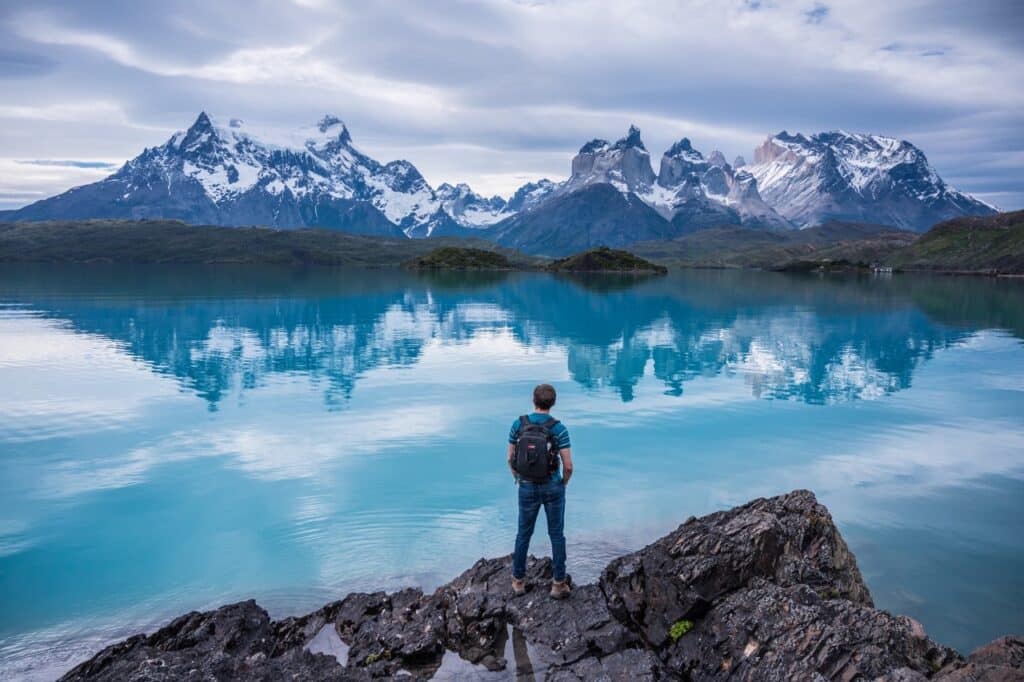
A three-week trip to Patagonia provides ample time to fully immerse yourself in the region’s diverse landscapes, wildlife, and culture. In addition to the destinations covered in the shorter itineraries, consider visiting Tierra del Fuego, the southernmost region of South America.
Ushuaia, the southernmost city in the world, offers unique experiences like walking with penguins and cruising the Beagle Channel. Additionally, the Lake District region of both Chile and Argentina, located near the snow capped mountains of the Andes Mountains, features picturesque lakes, quaint towns, and opportunities for outdoor activities such as hiking, fishing, and skiing.
With three weeks to explore Patagonia, you can truly experience the region’s incredible variety and create lasting memories.
Budgeting for Your Patagonia Trip
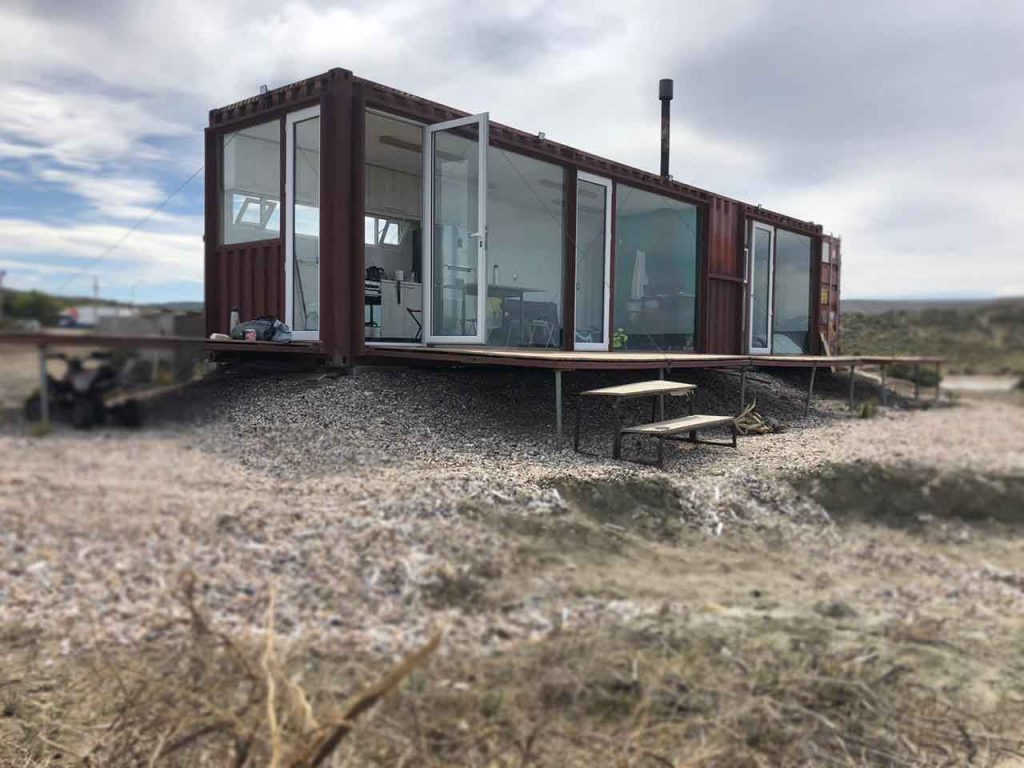
Planning your Patagonian adventure requires budgeting for the following expenses:
- Accommodation
- Transportation
Expenses can significantly differ based on your travel style and preferences, emphasizing the need for advanced planning and informed decision-making to optimize your budget.
To help you save money and make the most of your trip, we’ve compiled a list of money-saving tips that can be applied throughout your Patagonian journey.
Money Saving Tips
Budget-conscious travelers can save on costs by:
- Staying at hostels and guesthouses, which offer affordable accommodation options without compromising on comfort
- Cooking their own meals, which can significantly reduce food expenses
- Taking advantage of communal kitchens provided by many hostels and guesthouses, allowing them to prepare meals with local ingredients purchased from nearby markets or grocery stores.
Hitchhiking is another money-saving option for transportation within Patagonia. While not suitable for everyone, hitchhiking can provide a unique and cost-effective way to explore the region.
Lastly, being flexible with your transportation choices can help you find the best deals on bus tickets, flights, and rental cars. By implementing these money-saving tips, you can make your Patagonian adventure more affordable and enjoyable without sacrificing unforgettable experiences, including finding a great deal on a rental car.
Custom Itinerary Planning with a Patagonian Native
If you’re feeling overwhelmed with planning your trip to Patagonia, don’t worry, I’m here to help! Born and raised in Patagonia, I have over 20 years of experience organizing trips to both Argentine and Chilean Patagonia. With my deep knowledge and understanding of this region, I can help you plan a custom itinerary that will ensure you see the best of what Patagonia has to offer , tailored to your interests and preferences. Let’s make your Patagonian journey an unforgettable adventure!
Patagonia’s awe-inspiring landscapes, unique wildlife, and diverse outdoor activities make it a truly unforgettable destination. From the towering peaks of Torres del Paine to the stunning fjords of southern Chile, there’s something for every traveler in this vast and captivating region. By carefully planning your itinerary, budget, and travel arrangements, you can make the most of your Patagonian adventure and create lasting memories.
We hope this comprehensive guide has provided you with the information and inspiration you need to embark on your own Patagonian journey. With careful planning and responsible tourism practices, you’ll be well on your way to experiencing the trip of a lifetime in one of the world’s most breathtaking regions.
Frequently Asked Questions
How many days do you need for patagonia.
If you wish to explore all the highlights of Patagonia, plan for at least 7-10 days to fully take in its breathtaking 409,500 sq miles. By doing so, you’ll get to visit places like Torres del Paine, Tierra del Fuego, the Perito Moreno glacier (Argentina), El Chaltén (Argentina) and the Carretera Austral (Chile).
What is the best month to visit Patagonia?
For an unforgettable Patagonia experience, plan your trip between November and March!
How far in advance should you plan a trip to Patagonia?
Book your tickets six months in advance if travelling to Patagonia during December to February, and three months ahead for other high season months.
What time of year should I visit Patagonia?
The best time to visit Patagonia is from November to March, when the weather is mild and you can experience its stunning landscapes and pristine wilderness in their full splendor.
How can I get to Patagonia?
You can get to Patagonia by flying.
Save on your trip
- Book excursions in English.
- Search for cheap flights.
- Book your Car for Patagonia
- Buy travel and cancellation insurance for COVID
- Book transfers from the airport.
- Book buses within Argentina
- The best books and travel guides.
Book your tours
Search for your hotel, related posts.
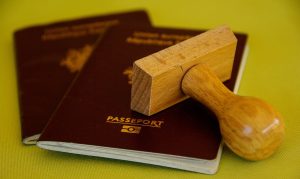
How much does a trip to Patagonia cost?
Patagonia, a region shared by Argentina and Chile, is a paradise for nature lovers and adventure
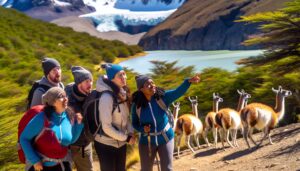
Top-Rated Patagonia Tour Companies for 2024/2025 Adventures
Choosing the best Patagonia tour companies is key to unlocking the full potential of your South
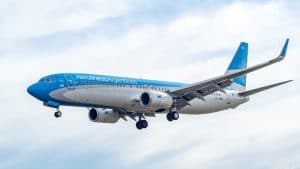
Can You Fly from Buenos Aires to Patagonia?
Exploring the majestic region of Patagonia, a land of awe-inspiring landscapes and unique wildlife, is a
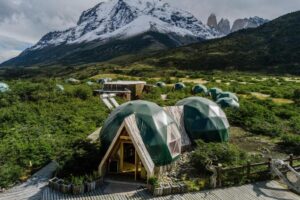
Experience the Ultimate Patagonia Glamping Adventure in Torres del Paine and El Chalten
Patagonia Glamping. Imagine yourself waking up amidst the breathtaking landscapes of Patagonia, nestled in luxurious accommodations

About the author
I am Matias, born in Patagonia, and a lover of my land.
For more than 20 years I help foreign travellers to organise their trip to Patagonia.
I also manage this exotic accommodation on the Atlantic coast.

Latest posts
- Best Tango Show in Buenos
- Best Patagonia Travel Books
- Hop On Hop Off Buenos Aires
Top 15 Must-See Argentina Locations for Your 2024 Trip!
Argentina vacation guide: explore top destinations and tours, is there a train from buenos aires to patagonia, explore the majestic ice: your ultimate perito moreno glacier tour guide, where is torres del paine, torres del paine how to get there, where is puerto natales, destinations.
- Accommodations
- Book your excursions
- Search for cheap flights
Terms & Conditions / Privacy Policy
Patagonia Tours & Vacations

Sandwiched between two oceans and sprawled across two countries. Patagonia is as ‘end-of-the-world’ as it gets.
Advancing glaciers, gushing waterfalls, snow-topped granite pillars…it’s no wonder Chile and Argentina both stake a claim over this beautiful slice of South America . Where else can you hike past herds of guanaco, hear giant shards of ice crash into the sea, sail the Beagle Channel past unique flora and fauna, and drop by the world’s southernmost city? If anywhere makes you feel small, it’s Patagonia. Adventure to the end of the world and appreciate our planet at its most wild and spectacular.
Our Patagonia trips
Let's create an exclusive trip for your group.
Patagonia highlights
Patagonia tour reviews.
Filter by rating
Classic Hikes of Patagonia
Premium Patagonia
Travelling to Chile? Here’s the best time to go
7 different ways to see Patagonia with Intrepid
Travel is back and we just dropped 10 new Premium adventures
The top 9 destinations for travel in November 2024
8 awesome experiences you MUST have in Argentina
Hiking in Torres del Paine? Here’s what you need to know
Want to eat well in Patagonia? Read this
What it’s really like exploring Patagonia on a group tour
Patagonia travel FAQs
Do i need a covid-19 vaccine to join an intrepid trip.
Trips from 1 January 2023 onwards
From 1 January 2023, Intrepid will no longer require travelers to provide proof of vaccination against COVID-19 (excluding all Polar trips and select adventure cruises).
However, we continue to strongly recommend that all Intrepid travelers and leaders get vaccinated to protect themselves and others.
Specific proof of testing or vaccination may still be required by your destination or airline. Please ensure you check travel and entry requirements carefully.
Where is Patagonia?
Patagonia is a geographical region located at the southern tip of South America.
It spans the lower sections of Argentina and Chile and is governed by both countries.
Do I need a visa to visit Patagonia?
You will need to organize your visa. Entry requirements can change at any time, so it's important that you check for the latest information.
Please visit the relevant consular website of the country or countries you’re visiting for detailed and up-to-date information specific to your nationality.
Check the Essential Trip Information section of the itinerary for more information.
What is the weather like in Patagonia?
Patagonia is much cooler than the rest of South America. With diverse terrain ranging from glaciers to mountains and coastlines, the region sees extreme variations in weather.
Average temperatures range from 48-64°F in summer and 32-43°F in winter, but sub-zero temperatures are common.
The weather can be unpredictable at any time of year, and it feels much cooler when there are strong winds.
Snow is possible towards the end of autumn (May), and continues into winter with heavy snowfall down south and in the mountains.
When is the best time to visit Patagonia?
October to March (spring/summer) is considered to be the best time to visit Patagonia; this is when most of our trips run. During this period, daytime temperatures average up to 72°F, but it's a chilly 39°F at night.
Rain and strong winds are possible at any time of year and can make the temperature feel much cooler.
Is tipping customary in Patagonia?
Tipping in Patagonia is common, but only when you’re satisfied with the service.
Aim for 10-15% of a bill at a restaurant or cafe as a general guide (if it’s not included already).
It’s also common to give hotel porters, drivers and other staff a small tip.
What is internet access like in Patagonia?
You will find wi-fi in most hotels, cafes and restaurants in large towns and cities, but it can be harder to find as you venture to more remote areas.
You may wish to buy a local SIM card if you want to stay in contact with folks at home, but a phone signal can still be patchy in remote areas.
What are the toilets like in Patagonia?
You will find Western-style flushable toilets in Patagonia.
It is a good idea to carry your own toilet paper and hand sanitizer, as they’re not always provided.
Just note that while the toilets are modern, the plumbing isn’t and can clog easily, so you may see signs asking you not to flush toilet paper and use the bin provided instead.
What is ATM access like in Patagonia?
ATMs are available in larger towns and cities but are less common in small villages or rural areas.
Make sure you have enough cash before leaving urban areas.
Argentina uses the Argentinean Peso, while Chile uses the Chilean Peso. It might also be worth bringing some US dollars.

Can I use my credit card in Patagonia?
Credit cards may not be accepted in small towns and rural areas.
Make sure to carry enough cash when visiting rural areas in case credit cards are not an option.
What to pack for Patagonia
Please check your Essential Trip Information for a complete list of packing suggestions for your itinerary.
These are the basics you will need to bring for an active adventure in Patagonia:
- Closed-in, waterproof walking shoes/hiking boots
Sun protection (hat, sunscreen, sunglasses)
Rucksack and day bag
Reusable water bottle
Thermal base layers
Hiking clothing
Waterproof/windproof jacket
Do I need to purchase travel insurance before traveling?
Absolutely. All passengers traveling with Intrepid are required to purchase travel insurance before the start of their trip. Your travel insurance details will be recorded by your leader on the first day of the trip. Due to the varying nature, availability and cost of health care around the world, travel insurance is very much an essential and necessary part of every journey.
For more information on insurance, please go to: Travel Insurance
Are Intrepid trips accessible for travelers with disabilities?
We are committed to making travel widely accessible , regardless of ability or disability. We do our best to help you see the world, regardless of physical or mental limitations.
We are always happy to talk to travelers with disabilities and see if we can help guide them toward the most suitable itinerary for their needs and, where possible, make reasonable adjustments to our itineraries.
- Skip to primary navigation
- Skip to main content
- Skip to primary sidebar
- Skip to footer
Green Global Travel
World's largest independently owned Ecotourism / Green Travel / Sustainable Travel / Animal & Wildlife Conservation site. We share transformative Responsible Travel, Sustainable Living & Going Green Tips that make a positive impact.
20 Awesome Tips for Planning Your Patagonia Trip
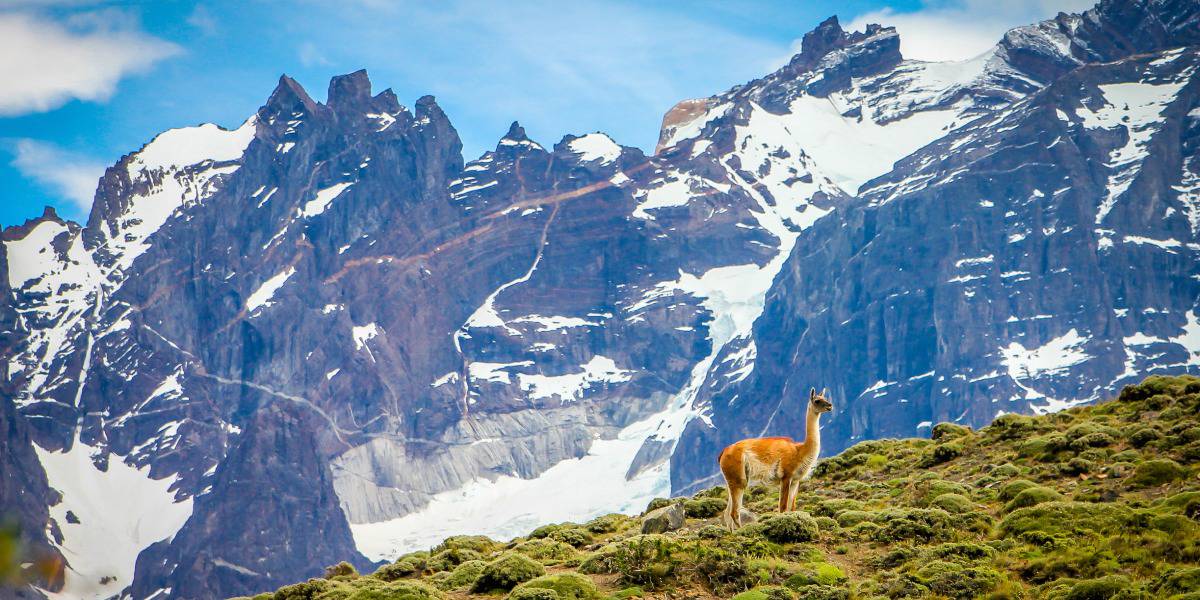
Disclaimer: This post may contain affiliate links. All hosted affiliate links follow our editorial policies .
Those fortunate enough to discover this premiere travel destination, reading insider tips for planning a Patagonia Trip can be a huge benefit.
The region is heaving with national parks and UNESCO sites , with four World Heritage Sites in Argentina and four World Biosphere Reserves in Chile.
It’s steeped in a history that reads like sea-going legend, and some fame is attached to it for simply being the most southernly bit of the American continent.
Patagonia travel offers an awful lot to discover. It has a Pacific and Atlantic coast, both replete with cool ocean animals to spot, including whales , penguins , and sea lions .
It has vast grasslands, imposing rock faces, drifting glaciers, and serene lakes . It is wide open and scarcely populated, with just a spattering of unique towns and villages to suggest humans inhabit it at all.
There is also a lot to know before heading down that way. With such rugged and isolated terrain, it’s wise to understand the climate and the costs.
As an international destination, it’s important to know what documents to get before arriving and what items to take. In a place so expansive, it’s imperative to have an idea of how to get around.
In a world so chocked full of amazing stuff, it’s good to get a grasp on what to do and see. With this info in tow, a Patagonia trip is surely to blow you away (perhaps quite literally).
READ MORE: The 20 Best Things to Do in Patagonia (South America)

TIPS FOR PLANNING YOUR PATAGONIA TRIP
- What To Expect on a Trip to Patagonia
- Things To Know Before Your Patagonia Trip
- Traveling To Patagonia
- Places To Visit in Patagonia
- Choosing Patagonia Tours
READ MORE: What Is Ecotourism? (The History & Principles of Responsible Travel)
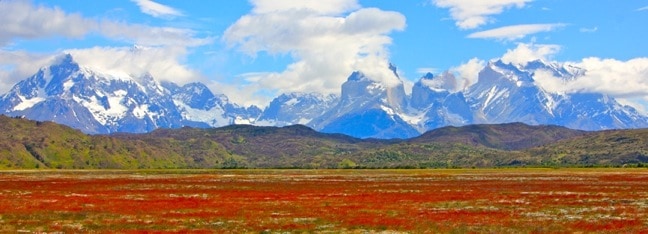
WHAT TO EXPECT ON A TRIP TO PATAGONIA
The stereotypical images of South America include historic colonial cities, colorful textile markets, wild Amazon rainforest animals , uncontacted indigenous tribes, and beautiful tropical beaches .
But Patagonia offers a distinctly different type of South American experience. It’s sort of like the Yellowstone National Park of South America– a vast land carved by glaciers, full of wide-open spaces, endemic weird animals , and uniquely beautiful backdrops.
Exploring Patagonia is a travel experience unlike anything else the continent has to offer. Here are a few basic things you should know before you travel to Patagonia:
READ MORE: The 20 Best Wildlife Parks & Wildlife Tours in the World

1. A Patagonia Vacation is More Expensive
The unavoidable result of the region’s remoteness is that things are more expensive in Patagonia than other parts of South America .
Budget travel in Patagonia isn’t really an option. Because tourism there is seasonal, the demand and limited accommodation options raises the prices of rooms at peak times.
Much of the food in Patagonia must be imported, which drives up dining costs. In other words, the region isn’t as cheap as Colombia or Peru , but it’s totally worth it!
READ MORE: 50+ Pieces of Advice I Would Include in a Letter To My Younger Self

2. The Best time to Visit Patagonia is Austral Summer
Timing your Patagonia travel is incredibly important. In terms of weather, the best time to visit Patagonia is the Austral summer, which is December through February.
In the southern hemisphere, this is when the temperatures are warmest. Patagonia is located about as far from the equator as Ukraine and the southern territories of Canada , so visiting when the region is at its warmest is generally a good idea.
But because this is peak season, more crowds are to be expected.
READ MORE: 25 Tallest Mountains in the World by Continent (World Travel Bucket List)

3. Consider Traveling to Patagonia During the Shoulder Season
If you want to avoid crowds completely (and save some money), consider traveling to Patagonia during the shoulder seasons–Austral spring (September-November) and fall (March-May).
Temperatures in the area average a few degrees colder each month outside of the peak season. For example, in the month of February, Perito Moreno averages in the upper 50s, while March is in the lower 50s, and April is in the mid-40s.
READ MORE: The Effects of Mass Tourism (How Overtourism is Destroying 30+ Destinations)

4. Visiting Patagonia Takes Time
Remember that Patagonia encompasses just over 400,000 square miles (Texas isn’t quite 270,000) and stretches over 15 degrees of latitude.
It’s essentially the length from the bottom of California to the top of Washington state. So you can expect that temperatures will be vastly different depending on where you are in the region.
The ecosystems can be quite different as well, moving from desert to mountain lakes to coastal islands. Suffice it to say, visiting Patagonia in one trip requires a good chunk of time .
READ MORE: List of National Parks By State (An Epic Guide to “America’s Best Idea”)

THINGS TO KNOW BEFORE YOUR PATAGONIA TRIP
For those interested in deep exploration of the region, it’s important to realize that there are two countries in Patagonia. Most of the Patagonia region is in Argentina, but there are also many serious points of interest in Chile.
So an in-depth Patagonia trip will require crossing an international border. And since it’s very remote and undeveloped, it’s best to stock up on all the conveniences you’ll need for your journey when you’re in Santiago or Buenos Aires.
Here are a few other key things to know before you visit Patagonia:
READ MORE: The 7 Safest Countries in the Middle East For Americans to Visit

5. Each Patagonia Country Requires a Passport
Getting into Chile and Argentina only requires a passport for US and EU citizens, as well as those from Canada, Australia , and New Zealand .
A passport allows you a 90-day stay, and trips to a neighboring country (with a new entry stamp upon reentry) can allow you to stay another 90 days.
The process for getting a visa is long, complicated, and expensive, so it’s probably better not to do so unless you are moving to the region for good.
READ MORE: 15 Harmful Traditions & Cultural Practices Tourists Should Never Support

6. Plan for Reciprocity Fees
Though a passport might be enough documentation to get into these countries, reciprocity fees may be charged for certain nationalities.
In 2014, the situation changed for visitors from the United States (and Canada), when Chile eliminated a $160 entry fee.
The same thing happened in 2016 for US citizens entering Argentina. Of course, with the turbulent politics of the day, who knows what will happen this year?
NOTE: This is particularly useful information to have when crossing borders remotely.
READ MORE: How to Avoid Products With Palm Oil
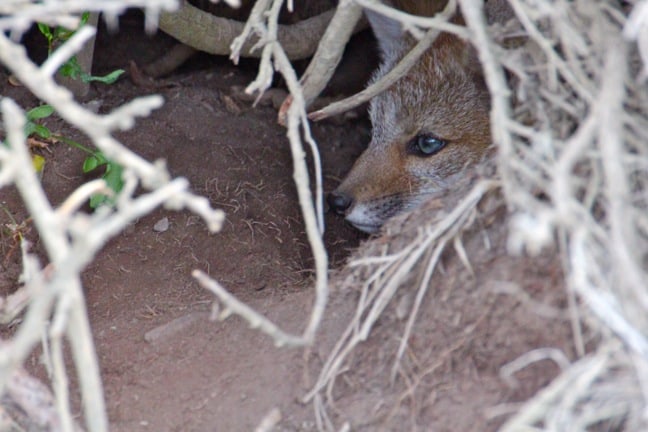
7. Bring Both Credit Cards & Cash on a Patagonia Trip
Credit cards (MasterCard & Visa are best) and cash machines (debit cards need a four-digit pin code) are common in the populated areas of Patagonia. But it’s good to have a back-up card, as certain machines sometimes inexplicably don’t like certain cards.
On that note, having a couple of days’ worth of cash or travelers checks aren’t a bad insurance policy, either.
Inform your bank where you’ll be traveling and have a second option in mind should your credit cards not work. Western Union always works in a pinch.
READ MORE: The 20 Safest Countries in Africa to Visit

8. Pack Power Adapters for Argentina & Chile
8) Packing electrical power adapters for Argentina and Chile are a necessity. Standard electricity in Patagonia is 220 volts, as opposed to 120 volts in the US.
When charging your phone, tablet, or laptop, a basic plug adapter should be fine. These low-power devices are designed to adapt to different voltages.
However, using something more energy-demanding, such as a hair dryer, requires a voltage adapter as well.
Argentina and Chile share the type C plug with two round pegs (the same as is used in mainland Europe ) but have different three-prong set-ups (type I and type L, respectively).
READ MORE: 20 Best Cultural Festivals Around the World (For Your World Travel Bucket List)

9. Layers are Best for Unpredictable Patagonia Weather
Patagonia weather is unpredictable and can get cold, windy, and wet in a hurry. So travel clothing should include layers of warm clothing, as well as rain gear.
Good waterproof hiking shoes for men and hiking shoes for women that are broken in and comfortable make hiking in Patagonia much more enjoyable. While we’re on the topic of precipitation, a water-resistant backpack is also useful.
READ MORE: The 30 Most Comfortable Walking Shoes & Hiking Shoes for Women
10. Pack Sun Protection for Patagonia Adventures
The blazing sun of the southern hemisphere can sneakily fry foreheads, ears, and hair partings, so it’s also a good idea to pack a hat, sunglasses, and sunscreen.
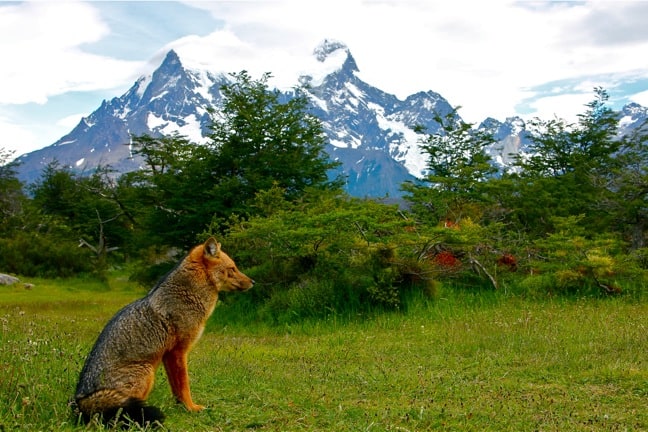
TRAVELING TO PATAGONIA
There is no international airport in Patagonia, so getting there is usually part of the adventure. Options abound for venturing into the bottom rungs of the South American continent.
In fact, because the region is so large, transportation will likely be an integral and possibly rewarding part of the trip.

11. Options for Flying to Patagonia
Flying to Patagonia will require stopping in either Buenos Aires (EZE) or Santiago (SCL). From there, you can take domestic flights to reach smaller airports in different parts of Patagonia.
Flights from Buenos Aires can take you to Bariloche, Trelew, El Calafate, or Ushuaia. Chilean outposts include Punta Arenas, Puerto Natales, Coyhaique, Castro, Puerto Montt, and Temuco.
Either way, most domestic flights out of the major cities should be in the $200 range for a round-trip ticket.
READ MORE: The 21 Best Environmental Charities & Animal Charities
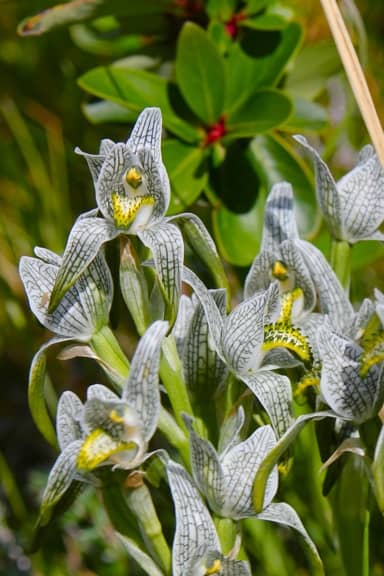
12. Flights between Airports in Patagonia are More Expensive
It’s possible to get flights between the airports in Patagonia as well but be aware that Chilean flights stay in Chile and Argentinian flights stay in Argentina.
These flights tend to be much more expensive than flying in from the capitals. However, Chile does offer an internal Patagonian flight on a nine-seater plane to Puerto Williams (its southernmost settlement).
READ MORE: Top 15 Female Wildlife Conservationists & Animal Rights Activists

13. Traveling to Patagonia by Bus is Less Expensive
Bus services are plentiful and have well-trodden routes, both down to Patagonia and within the region. They are surprisingly comfortable, with some routes including bed options.
They can usually be booked a couple of days in advance, and they’ll be much less expensive than flying down from Santiago or Buenos Aires.
The big issue is that traveling to Patagonia by bus takes a long time: Getting from Buenos Aires to Ushuaia takes about 48 hours.
READ MORE: Best Coffee In the World (A Gourmet’s Guide to 30 Types of Coffee)
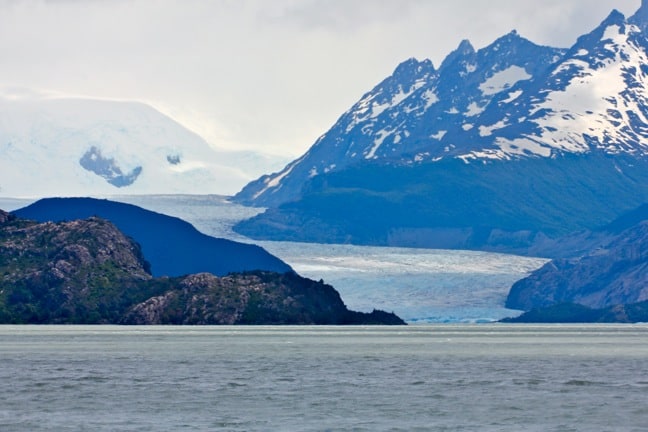
14. Options for Getting to Patagonia by Sea
Ferries are yet another adventurous transportation alternative. For those who like the sea, this could really be a bonus experience for your trip.
Chile has ferries that run from down the coast to Puerto Chacabuco in Patagonia, as well as ferries within the region.
There’s also a long trip from Puerto Montt to Puerto Natales that leaves every Friday and arrives on Monday, as well as a trip from Punta Arenas to Puerto Williams (which takes 32 hours).
READ MORE: 20 Best Small Ship Cruises for Your World Travel Bucket List
PLACES TO VISIT IN PATAGONIA
However you choose to travel to Patagonia, the region is all about nature.
From the birds of Patagonia (including Andean condors, penguins, and caracaras) to mammals (including guanaco, pumas, and whales), the region is packed with wildlife.
From the desert-like steppes to the mystic mountains of the southern Andes, this is one of the least populated places on the planet, with a mere five people per square mile. In other words, this is the natural world at its most pristine, with room to roam freely.
READ MORE: What is an Eco Lodge? The Top 20 Eco Resorts & Eco Hotels in the World

15. Los Glaciares National Park (1 on Map)
Los Glaciares National Park is a UNESCO World Heritage Site on the Argentinian side of Patagonia. As its name would seem to suggest, the park is renowned for its stunning glaciers.
Of course it also has beautiful lakes, mountains, and forests. However, the glaciers here steal the show, and they constitute the largest continental ice extension after Antarctica .
Perito Moreno, which is close to the town of Calafate, is arguably the most famous of the park’s glaciers, and it’s truly a must-see.
READ MORE: 30 Antarctic Animals You Can See on an Antarctica Cruise

16. Torres del Paine National Park (2 on Map)
Torres del Paine National Park is a UNESCO World Biosphere Reserve on the Chilean side of Patagonia.
It’s revered for the looming massifs of its namesake mountain as well as stunning lakes, gorgeous Patagonia flowers , montane forests, and abundant Chilean wildlife .
The mountain is considered one of the planet’s premier rock-climbing destinations, while the W Trek is regarded as one of the world’s great hikes . The park also includes the majority (90%) of the Southern Patagonia ice field, which is also seen in Los Galciares.
READ MORE: 20 Best Mountains In The World (For Your World Travel Bucket List)
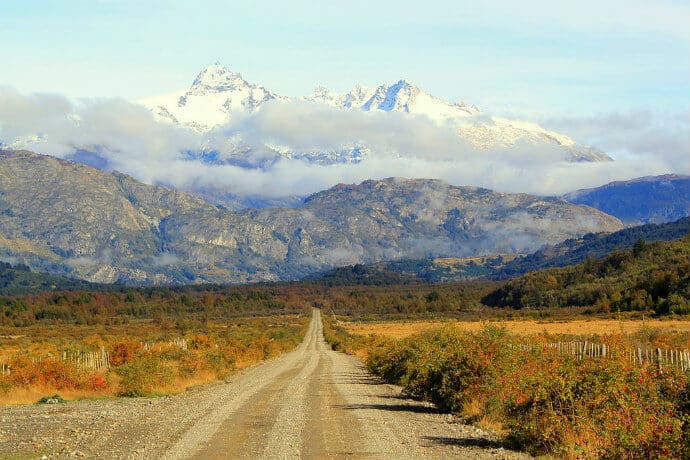
17. Carretera Austra Highway (3 on Map)
If you love scenic road trips, Chile’s Carretera Austra Highway (a.k.a. Ruta 7) is an absolute mind-blower. Stretching around 770 miles from north to south, it passes by massive volcanoes, brilliant blue glacial lakes, and virgin forests.
The route takes you by Pumalín National Park, Parque Queulat, the Enchanted Forest, Cerro Castillo National Park, and Patagonia Park. In other words, a trip down this road alone could supply a full vacation’s worth of adventure!
READ MORE: 25 Biggest Forests in the World (For Your World Travel Bucket List)
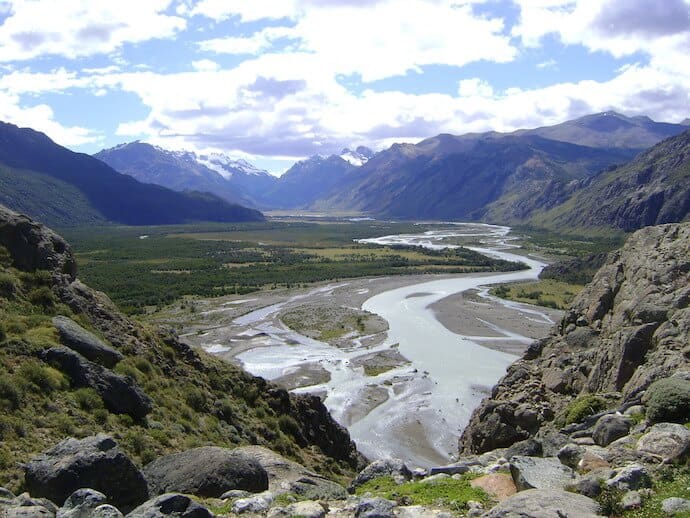
18. El Chaltén (4 on Map)
El Chaltén is considered by many avid backpackers to be the hiking capital of Patagonia, particularly on the Argentinian side.
The area offers lots of day hikes (including Laguna de Los Tres and Laguna Torres) as well as multiple-day hikes (the best is arguably Monte Fitz Roy-Cerro Torre).
The village of El Chaltén overlooks Los Glaciares National Park, and is a border town that’s widely known as a hippie (and expat) hotspot.
READ MORE: The 50 Best Hiking Quotes to Inspire Your Adventures
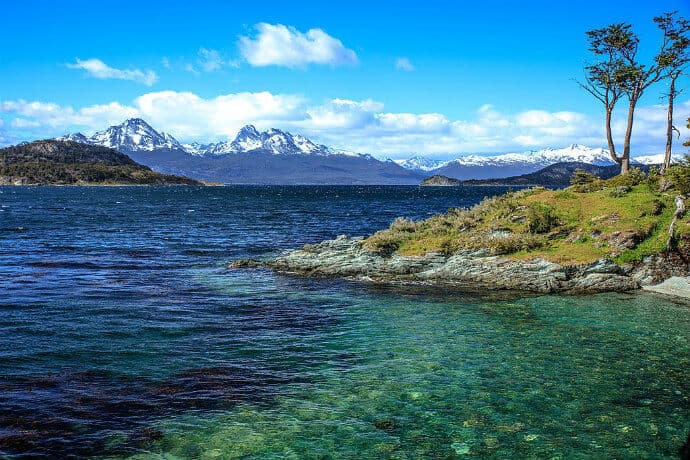
19. Tierra del Fuego (5 on Map)
Across the famous Straits of Magellan, Tierra del Fuego (and all of its incredible wildlife ) beckons Patagonia visitors.
In addition to a diverse flock of seabirds, the coastline teems with South American sea lions and pods of Peale’s dolphins. It is also home to the only continental breeding colony of king penguins , which congregate throughout the year in Porvenir.
READ MORE: 10 Eco Lessons in Quotes from The Lorax (Dr Seuss’ Conservation Classic)
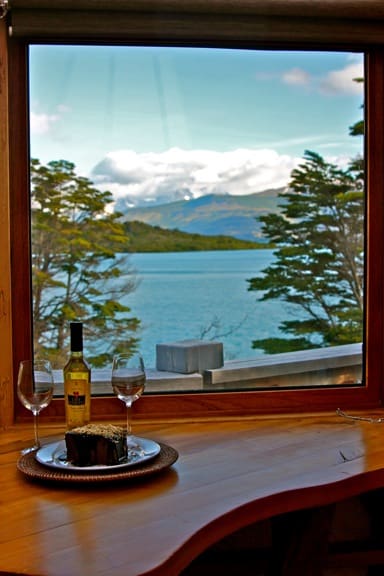
CHOOSING PATAGONIA TOURS
20. realistically assess your own limits when selecting patagonia tours.
There are lots of Patagonia tours available, ranging from comprehensive itineraries offered by world-renowned tour outfits to shorter tours purchased from local proxies.
The key to choosing between all of these myriad options is realistically assessing your own limits and staying within those boundaries.
Some people love getting out into the middle of nowhere and completely winging it, but most of us appreciate some guidance, advance planning, and a sense of security.
For those with little command of Spanish or experience navigating foreign countries alone, a pre-planned small group tour will probably be the best bet.
It will ensure that the necessary logistics don’t get in the way of your enjoyment, as the trails and tour routes will be vetted for safe passage and ultimate experience. Plus, it’s possible to find companies that use primo local guides.
However you ultimately choose to visit Patagonia, this iconic South American destination is guaranteed not to disappoint.
It’s one of those magical places that leaves little doubt as to just how majestic our planet can be. It’s a place unlike any other, still largely the way Mother Nature painted it, ready to wow anyone willing to take the epic journey. –by Jonathon Engels

About the Author
The financially unfortunate combination of travel enthusiast, freelance writer, and vegan gardener, Jonathon Engels whittled and whistled himself into a life that gives him cause to continually scribble about it. He has lived as an expat for over a decade, worked in nearly a dozen countries, and visited dozens of others in the meantime, subjecting the planet to a fiery mix of permaculture, music, and plant-based cooking. More of his work can be found at Jonathon Engels: A Life About.
As Seen On…

Join the 300,000+ people who follow Green Global Travel’s Blog and Social Media
- 9 Places Just Outside Moscow...
9 Places Just Outside Moscow to Experience Rural Russia

Moscow is a buzzing metropolis, but only a short car ride away from Russia’s capital are some tranquil getaways. From a boho art park to a literary museum-reserve to a riverside paradise—here are the best places for a short escape from the city that never sleeps.
Nikola lenivets art park.
Although rural Russia is not the first place you’ll go looking for contemporary art, Nikola Lenivets proves that otherworldly wooden installations scattered on a 650-hectare field can turn an abandoned village into a tourist mecca. Located only 220 kilometers (137 miles) from Moscow , this place is amazing in any season; however, in summer, visitors can test their gardening skills and create art objects.
Nikola Lenivets Art Park, Kaluga Region, Russia , +7 499 504-43-33

Abramtsevo Museum-Reserve
In the Abramtsevo Museum-Reserve , you’ll get a chance to see what life in a Russian 19th-century estate was like. The Abramtsevo estate, set against a backdrop of unspoiled nature, rose to prominence in the middle of the 19th century. The place used to have some celebrated owners and equally famous visitors: writer Sergey Aksakov bought the estate in the 1840s, and after his death, entrepreneur Savva Mamontov purchased it, turning it into an artist community. At different times, writers Nikolai Gogol and Ivan Turgenev , as well as artists Ilya Repin , Valentin Serov , and Mikhail Vrubel, among others, frequented Abramtsevo.
Abramtsevo Museum, Reserve, 1 Muzeynaya Street, Abramtsevo Colony, Moscow Region, Russia , +7 496 543-24-70

Sukhanovo Estate
Ever wondered what the estate of the Bolkonsky family from Tolstoy’s War and Peace looks like in real life? Located near the city of Vidnoe in the Moscow region, this land was the property of the famous Volkonsky family. The magnificent manor used to host dazzling balls; the mausoleum houses the bodies of Prince and Princess Volkonsky, and the overgrown garden is home to an elegant pavilion. Sadly, most structures have deteriorated, but it’s still a great place to explore on a sunny day.
Sukhanovo Estate, Vidnoe, Moscow Region, Russia , +7 968 529-60-60

Bykovo Estate
If you take a 40-minute bus ride southeast of Moscow, you’ll find yourself in the blemished but still beautiful Bykovo Estate. Designed by celebrated Russian architect Vasily Bazhenov, the place is known for its spectacular Gothic-style church . Stroll through the forested park, past the charming pondside rotunda and admire the neo-Renaissance Bykovo manor.
Bykovo Estate, Kolkhoznaya street, Bykovo, Moscow Region, Russia , +7 496 462-41-26

Gzhel Porcelain Factory in Turygino village
In Turygino village, you can explore the outdoors, go gift shopping, and learn about Gzhel porcelain—one of the most popular gifts people bring home from Russia. At the local Gzhel Porcelain Factory , you can buy original pieces with a signature stamp on them, admire the largest collection of Gzhel porcelain in Moscow and see the production of these legendary items.
JSC ‘Union Gzhel’, Turygino village, Ramensky district, Moscow Region, Russia , +7 906 055-23-57

Ugresha Monastery
This 16th-century monastery is worth a visit if only to see the tallest bell tower in the Orthodox world. A living representation of Russia’s history, legend has it that Russian saint Dmitry Donskoy founded it. Ugresha Monastery has been destroyed and rebuilt multiple times, and today, you can feast your eyes on the well-preserved buildings.
Ugresha Monastery, 1 Svyatitelya Nikolaya Square, Dzerzhinskiy, Moscow Region, Russia , +7 495 551-26-43

Istra River
Lush green forests and breathtaking river views are a two-hour car ride away from Moscow. With plenty of hotels dotting its banks, Istra River is a perfect place for a short retreat, complete with swimming, fishing, and Russian banya.
Istrinskoe Vodokhranilische, Moscow Region, Russia

Tchaikovsky House Museum in Klin
The nondescript city of Klin would have never become a tourist draw if it hadn’t been for the house museum of Tchaikovsky . Russia’s most famous composer spent his last years in this house, which became a museum right after his death. Surrounded by a lovely garden, the museum houses original interiors and personal belongings of the great composer, including a mechanical rooster and a cast of Anton Rubinstein’s hand.
Tchaikovsky House Museum, 48 Tchaikovskogo street, Klin, Moscow Region, Russia , +7 496 245-81-96

Since you are here, we would like to share our vision for the future of travel - and the direction Culture Trip is moving in.
Culture Trip launched in 2011 with a simple yet passionate mission: to inspire people to go beyond their boundaries and experience what makes a place, its people and its culture special and meaningful — and this is still in our DNA today. We are proud that, for more than a decade, millions like you have trusted our award-winning recommendations by people who deeply understand what makes certain places and communities so special.
Increasingly we believe the world needs more meaningful, real-life connections between curious travellers keen to explore the world in a more responsible way. That is why we have intensively curated a collection of premium small-group trips as an invitation to meet and connect with new, like-minded people for once-in-a-lifetime experiences in three categories: Culture Trips, Rail Trips and Private Trips. Our Trips are suitable for both solo travelers, couples and friends who want to explore the world together.
Culture Trips are deeply immersive 5 to 16 days itineraries, that combine authentic local experiences, exciting activities and 4-5* accommodation to look forward to at the end of each day. Our Rail Trips are our most planet-friendly itineraries that invite you to take the scenic route, relax whilst getting under the skin of a destination. Our Private Trips are fully tailored itineraries, curated by our Travel Experts specifically for you, your friends or your family.
We know that many of you worry about the environmental impact of travel and are looking for ways of expanding horizons in ways that do minimal harm - and may even bring benefits. We are committed to go as far as possible in curating our trips with care for the planet. That is why all of our trips are flightless in destination, fully carbon offset - and we have ambitious plans to be net zero in the very near future.

Food & Drink
The best halal restaurants in kazan.

Russian Last Names and Their Meanings

Incredible Photos From the Longest Bike Race in the World

Zhenotdel: The Soviet Union's Feminist Movement

The Mystery Behind Russia's Buddhist "Miracle"

The Soviet Union’s Best Heart-Throbs and Pinups

Unusual Facts About the Soviet Union

See & Do
Russia's most remote holiday destinations.

Guides & Tips
A 48 hour guide to astrakhan, russia.

Restaurants
The best halal restaurants in kaliningrad.

A Guide to Cautionary Russian Proverbs and What They Mean

A Soviet Pilot Went Missing in Afghanistan and Was Found 30 Years Later
Culture trip spring sale, save up to $1,100 on our unique small-group trips limited spots..

- Post ID: 1601358
- Sponsored? No
- View Payload
2018 Primetime Emmy & James Beard Award Winner
R&K Insider
Join our newsletter to get exclusives on where our correspondents travel, what they eat, where they stay. Free to sign up.
A History of Moscow in 13 Dishes
Featured city guides.

COMMENTS
Patagonia trekking holiday, Patagonia Eco-camp. From £4180 £5403. 17 days ex flights. Camp & trek Los Glaciares & T. del Paine Parks, Patagonia. Small group Departs every Friday with min 2 people (based on Paine W trek in Chile). Departs every Sunday between October and April with min 2 people (based on Paine Circuit in Chile) view holiday.
Small group adventure vacation to Patagonia. From £4,900 (US $6,045) 20 days ex flights. Explore the spectacular wilderness and mountains of Patagonia. Small group 2024: 27 Oct, 17 Nov, 8 Dec, 2025: 12 Jan, 9 Feb, 9 Mar, 19 Oct, 9 Nov, 30 Nov. Read 9 reviews.
Patagonia travel guide. A triangle of land at the end of the world, with calving glaciers, shattered fjords and jagged mountains, Patagonia stirs the heart of red-blooded adventurers. But as our Patagonia travel guide reveals, there is so much more to this region than icy wilderness. Chocolate box towns, whales, penguins and seals, rugged ...
Patagonia 1 week tour, glaciers and estancias. One week in Patagonia to discover Ushuaia and El Calafate, from US $1790 (7 days) ex flights. Toggle navigation. menu. 01273 823 700. ... Responsible Travel. As the pioneers of responsible tourism, we've screened this (and every) holiday so that you can travel knowing it will help support the ...
Patagonia lies in the far south of Chile and Argentina and this tour is bookended by time in their big, exciting capitals: Santiago and Buenos Aires. In between, explore the wilds of Patagonia where the landscapes are beyond dramatic - think towering peaks, vast glaciers and tumbling waterfalls. Trek through Torres del Paine National Park ...
Patagonia adventure tour. Discover the glaciers and peaks of Patagonia, from £4095 (15 days) ex flights. Toggle navigation. menu. 01273 823 700. Call us after 9am. Destinations; Holiday Types; ... Responsible Travel. As the pioneers of responsible tourism, we've screened this (and every) holiday so that you can travel knowing it will help ...
Patagonia 5 day adventure vacation. Torres del Paine, El Calafate and Perito Moreno Glacier, from US $1310 - US $1660 (5 days) ex flights. Toggle navigation. menu. 1-866-821-6866 . ... Responsible Travel. As the pioneers of responsible tourism, we've screened this (and every) vacation so that you can travel knowing it will help support the ...
A tailor made Patagonia tour, which is also self guided, following a thirteen day itinerary. Using public buses to get around and a variety of hotels, you will also spend some nights in mountain hostels or refuges, as you will be exploring some pretty wild terrain, well off the beaten track. Starting in Calafate in Argentinian Patagonia, you ...
Patagonia adventure tour. Discover the glaciers and peaks of Patagonia, from £4095 (15 days) ex flights. Toggle navigation. ... About us; Contact us; 1-866-821-6866 . Call toll free. Patagonia adventure tour. Jump to. Highlights; Itinerary; Map; Price & dates; Responsible Travel; Price from. £4,095. You'll take on some of South America's ...
Patagonia luxury adventure vacation. Luxury hotels and adventure in Patagonia, from US $5515 - US $6190 (11 days) ex flights. Toggle navigation. menu. 1-866-821-6866 . Call toll free. ... Responsible Travel. As the pioneers of responsible tourism, we've screened this (and every) vacation so that you can travel knowing it will help support the ...
Patagonia highlights vacation. Explore the wild, mountainous south of Argentina and Chile, from US $7275 - US $7800 (13 days) ex flights. Toggle navigation. menu. 1-866-821-6866 . ... Responsible Travel. As the pioneers of responsible tourism, we've screened this (and every) vacation so that you can travel knowing it will help support the ...
Southern Patagonia tour, in depth. Immerse yourselves in the depths of this southern Patagonia, from US $3600 (18 days) ex flights. Toggle navigation. menu. 1-866-821-6866 . Call toll free. ... Responsible Travel. As the pioneers of responsible tourism, we've screened this (and every) vacation so that you can travel knowing we've worked to ...
Enjoy a more eco-friendly stay in Patagonia with our green guide to the region, taken from travel bible Great Escapes. Stay in an eco camp. Ride through the wilderness. Explore the Lake District. Paddles and pedals. Stay in an eco camp. Ecocamp is a remote, futuristic camp in Chile's Parque Nacional Torres del Paine.
Ferry travel in Patagonia is a less common option, with limited connections available. However, it offers a unique and leisurely way to explore the region's stunning landscapes, especially the Chilean fjords. ... Your responsible behavior will help protect these incredible creatures and ensure future generations can enjoy the same thrilling ...
What does responsible tourism mean? It is a way of traveling, a mindset. It reduces the negative impacts of travel on the ecosystem, economy, community, and culture of any place you visit. One way to do it is to travel in Patagonia onboard the Navimag ferry, an
Premium Patagonia. Chris · Traveled February 2024. The Patagonian Premium trip has been our fourth with Intrepid. We continue to be impressed with the experiences offered, the quality, professionalism, friendliness and knowledge of the tour leaders together with the small size of the tour groups. The quality of accommodation and meals provided ...
Sharing a Toast at Lago Grey Near Grey Glacier, Torres del Paine National Park Chile. 9. Layers are Best for Unpredictable Patagonia Weather. Patagonia weather is unpredictable and can get cold, windy, and wet in a hurry. So travel clothing should include layers of warm clothing, as well as rain gear.
Patagonia travel guide. A triangle of land at the end of the world, with calving glaciers, shattered fjords and jagged mountains, Patagonia stirs the heart of red-blooded adventurers. But as our Patagonia travel guide reveals, there is so much more than icy wilderness. Chocolate box towns, whales, penguins and seals, rugged gaucho culture and ...
Walking tour around Moscow-City.Thanks for watching!MY GEAR THAT I USEMinimalist Handheld SetupiPhone 11 128GB https://amzn.to/3zfqbboMic for Street https://...
Or at the bottom of Tverskaya right opposite Kremlin entrance, stop in at Grand Cafe Dr Zhivago for a taste of Imperial Russian food and decor.. Take a walk around the Kremlin and Red Square, perhaps visit Lenin's Tomb. Then, duck into GUM, Moscow's department store from the 1800s.Wander through the legendary food hall, Gastronome No. 1. These days, it may stock fine food imports from all ...
Designed by celebrated Russian architect Vasily Bazhenov, the place is known for its spectacular Gothic-style church. Stroll through the forested park, past the charming pondside rotunda and admire the neo-Renaissance Bykovo manor. Bykovo Estate, Kolkhoznaya street, Bykovo, Moscow Region, Russia, +7 496 462-41-26.
1: Off-kilter genius at Delicatessen: Brain pâté with kefir butter and young radishes served mezze-style, and the caviar and tartare pizza. Head for Food City. You might think that calling Food City (Фуд Сити), an agriculture depot on the outskirts of Moscow, a "city" would be some kind of hyperbole. It is not.